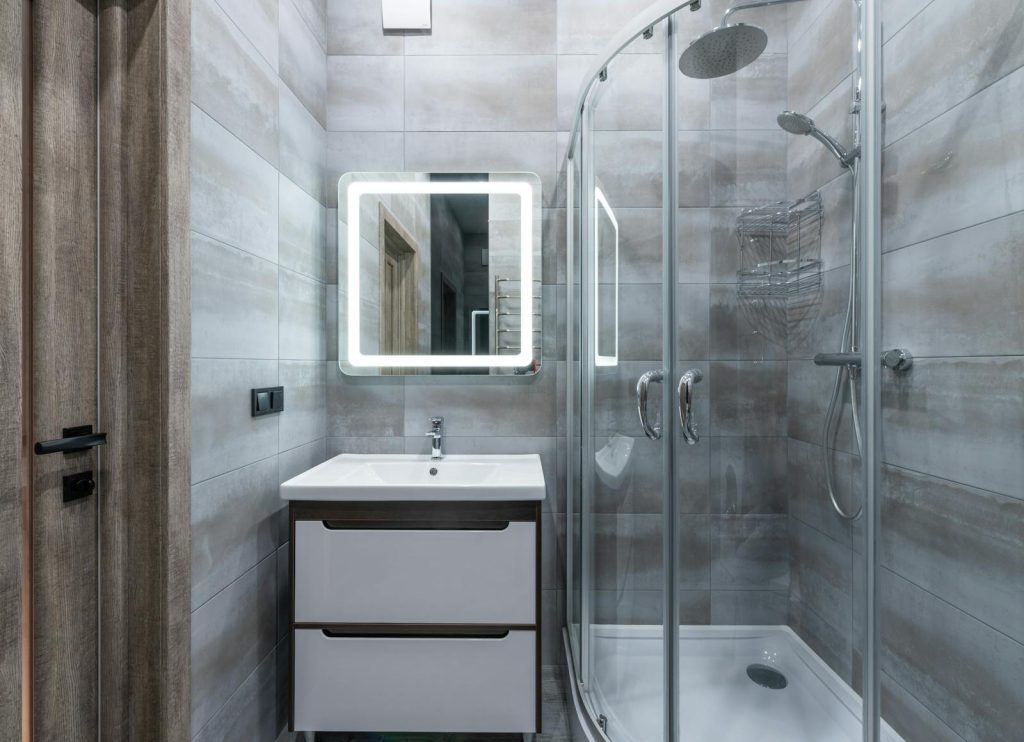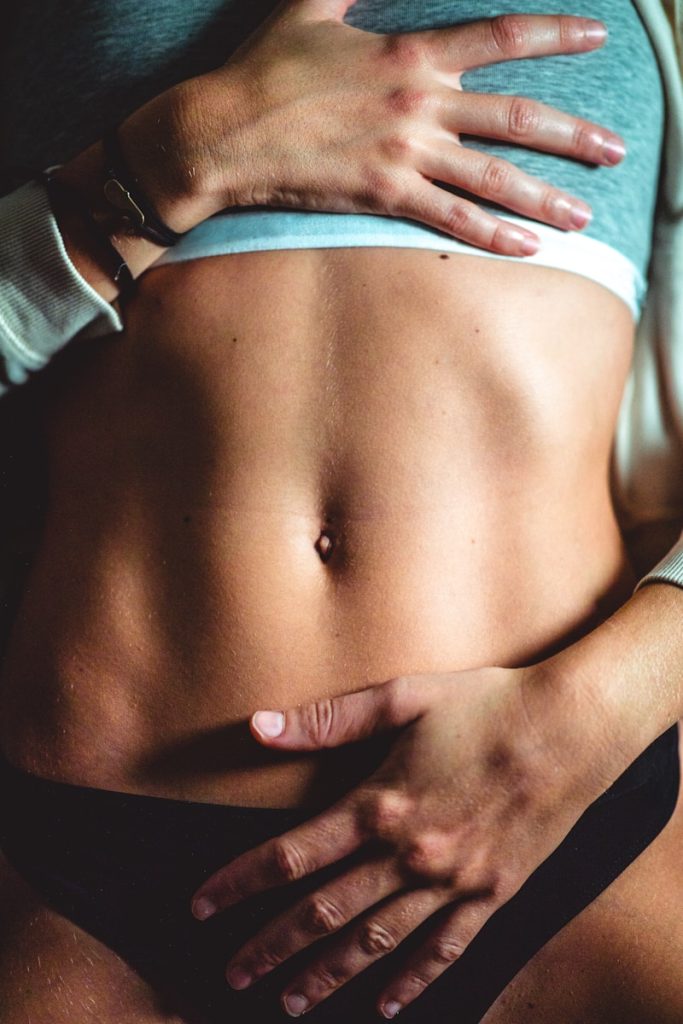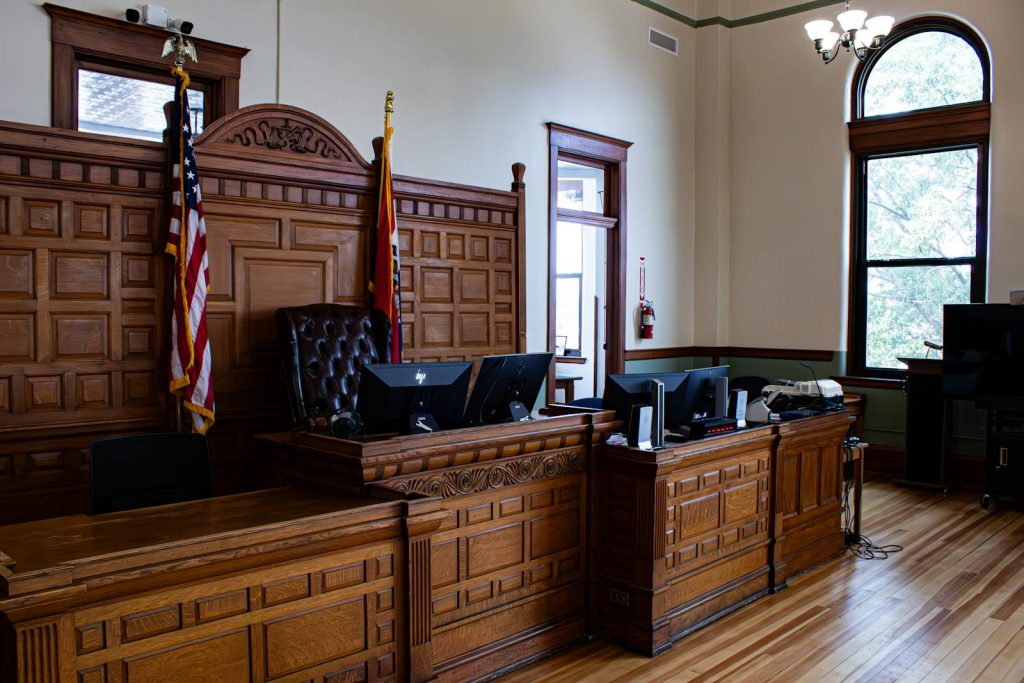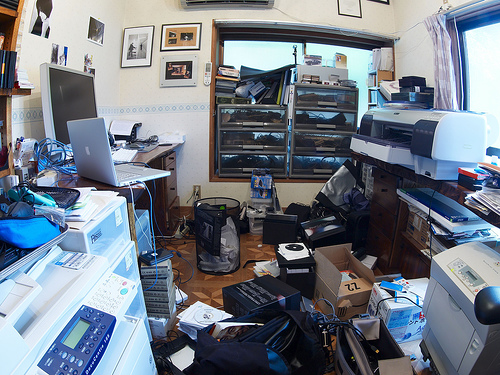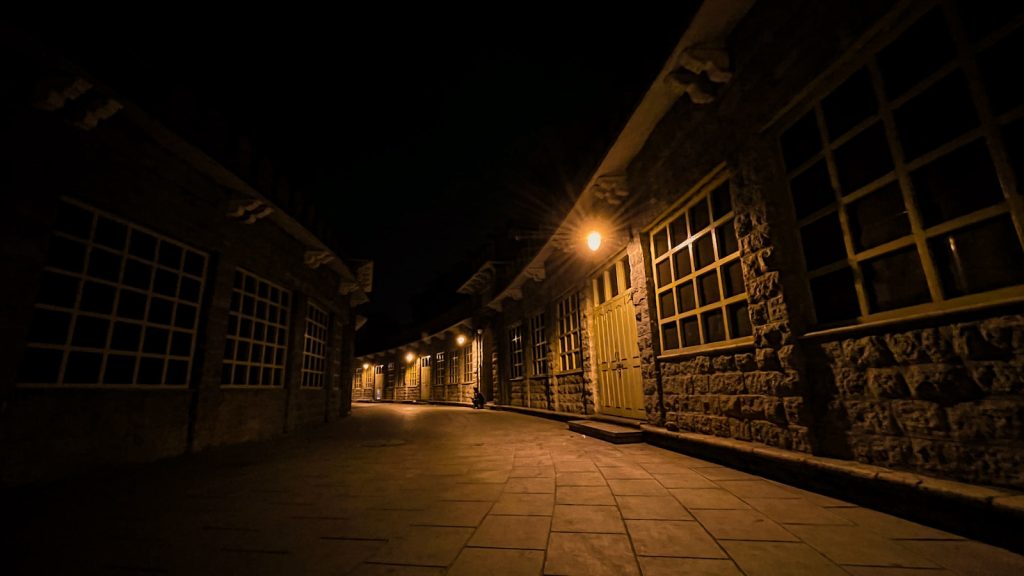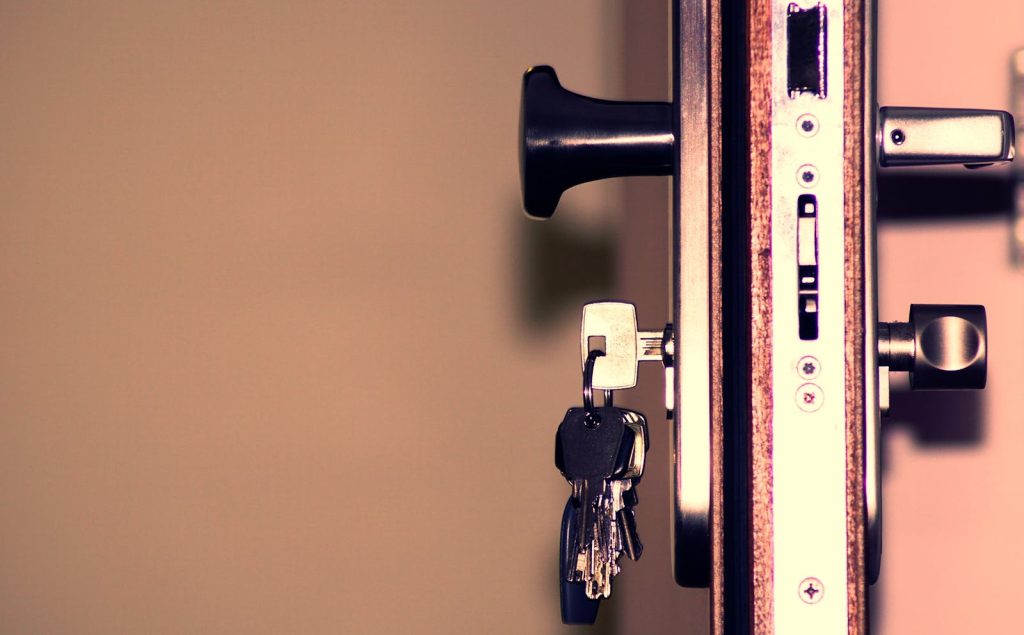When it comes to revamping a bathroom or designing a new one, many homeowners struggle with the choice between opting for a wetroom or sticking with a traditional bathroom setup. Each type has its own distinct features and advantages as well as some drawbacks that can affect how practical or pleasing your space is. This piece will compare wetrooms and traditional bathrooms so that you can identify which option fits your needs best. What is a Wetroom? Overview and Layout A wetroom is essentially a bathroom that can handle water easily. It typically features a shower area that doesn’t have any sort of tray or door. It’s built to allow water to flow right into the space, blurring the lines between the shower and the rest of the room. Key features of wetrooms include: Pros of Wetrooms Cons of Wetrooms Delving into Traditional Bathrooms Overview and Layout In contrast, traditional bathrooms feature separate sections dedicated for tasks like bathing, showering, and using the toilet. Key components of these bathrooms usually include: Pros of Traditional Bathrooms Cons of Traditional Bathrooms Key Points to Think About When Choosing Deciding whether to go with a wetroom or a traditional bathroom involves weighing specific factors: Final Thoughts In the end, whether you choose a wetroom or traditional bathroom comes down to your personal needs and what fits your lifestyle. While wetrooms boast modern looks and make the best out of available space, they do involve considerations about costs and upkeep. On the other hand, traditional bathrooms generate clearly defined areas to deal with day-to-day needs but can seem smaller in less spacious homes. As you undertake your upcoming renovation or design project, consider consulting various sources for ideas and guidance. Whether you go for the trendy appeal of a wetroom or the comforting style of a traditional bathroom, knowing your options will enable you to make a smart choice that improves functionality and adds to the overall charm of your home.
How Online Baccarat is Different from Classic Casino Baccarat
Baccarat has been loved by players for a long time and, thanks to technology, it has changed a lot. While the classic casino experience has a special vibe and allows people to interact socially, online baccarat brings ease and accessibility. This piece looks at how online baccarat and traditional baccarat differ, focusing on their distinct characteristics, game mechanics, and what players experience. 1. How the Games Work At their core, both online baccarat and classic baccarat follow the same basic rules where betting is done on the banker or player hand. The aim is always to have a hand closest to nine. However, the way the game works is quite different in each method. Classic Baccarat in Casinos: Online Baccarat: 2. Interaction Among Players The interaction level between players vastly differs in online baccarat compared to the traditional setting. Classic Baccarat in Casinos: Online Baccarat: 3. Access and Convenience Online baccarat has made it simpler than ever to enjoy the game. Classic Baccarat in Casinos: Online Baccarat: 4. Variety of Games Offered The selection of baccarat games can differ greatly between online venues and traditional casinos. Classic Baccarat in Casinos: Online Baccarat: 5. Trustworthiness and Fair Play When it comes to fairness, players often have concerns whether playing online or at physical casinos. Classic Baccarat in Casinos: Online Baccarat: 6. Betting Limits and Rules Betting limits in baccarat can also be quite different depending on whether you’re playing online or in person. Classic Baccarat in Casinos: Online Baccarat: 7. Overall Player Experience Ultimately, whether you prefer online baccarat or traditional casino baccarat depends on your own tastes and what kind of experience you seek. Classic Baccarat in Casinos: Online Baccarat: Conclusion In the end, both online baccarat(최고의 바카라사이트 그거맞음) and traditional baccarat have their own benefits and downsides. Players who love the authentic casino atmosphere and want direct interactions might gravitate toward physical casinos. Meanwhile, those who value ease, speed, and diversity may find online baccarat more suited to their lifestyle. As technology keeps moving forward, both styles are destined to evolve, adapting to what players hold dear. Whether you enjoy the buzz of a real casino or prefer the online alternatives, knowing the distinctions will help maximize your gaming fun in whichever choice you make.
Discover the Benefits of Fat Removal Injections in Zurich
Fat removal injections, also known as lipolysis injections, are becoming quite popular in Zurich among people looking to shape their bodies effectively. In this post, we’re going to discuss five major advantages of selecting this method for fat removal, especially at dedicated clinics like SW Beauty Bar in Zurich. 1. A Non-Surgical Option One of the primary benefits of fat removal injections is that they serve as a non-surgical alternative to conventional liposuction. Unlike surgical methods, which often involve a lengthy recovery process and a greater chance of complications, lipolysis injections are less invasive. Most patients can get back to their regular routines shortly after the procedure. This is especially attractive for those who may not have the time for surgery but are still interested in achieving noticeable improvements in body shape. 2. Precision in Fat Targeting Fat removal injections provide the ability to focus on specific areas of the body for fat reduction. Be it stubborn stomach fat, unwanted love handles, or pesky double chins, these injections can precisely dissolve fat in localized spots. This focused approach means that patients can mold their bodies according to their personal goals without harming the nearby tissues. Establishments such as SW Beauty Bar in Zurich employ advanced methods to guarantee the accurate placement of these injections, thus enhancing the efficiency of the treatment. 3. Short Treatment Duration Another great feature of fat removal injections is how quickly the treatments can be conducted. For most cases, procedures take about 30 minutes to an hour, depending on the areas being targeted. This quick process makes it especially handy for people who have packed schedules or those wanting to fit a beauty treatment into their lunch hour. The swift nature of these sessions enables individuals to reach their goals without spending too much time. 4. Little Recovery Time Many patients find the minimal recovery time associated with fat removal injections appealing. While it’s common to experience some swelling or bruising at the injection points, these side effects are generally mild and tend to go away quickly. Unlike surgeries that require lengthy periods of downtime, most patients can return to their usual activities almost right after their treatment. This is particularly advantageous for those who have active lifestyles or jobs that don’t allow for extensive recovery periods. 5. Sustainable Results When fat removal injections are performed by skilled professionals at dependable clinics like SW Beauty Bar in Zurich(Fettwegspritze Zürich), the outcomes can last a long time. The substances injected work by breaking down fat cells, which the body then gradually eliminates. To achieve the best results, patients are often encouraged to adopt a healthy diet and exercise routine after their treatments. By following these recommendations, individuals can enjoy their newly shaped bodies for a significant time. In summary, opting for fat removal injections in Zurich comes with a variety of benefits, such as a non-surgical method, precision in fat targeting, brief treatment sessions, minimal recovery, and lasting results. For those considering this option, clinics like SW Beauty Bar offer expert care designed to meet individual needs, ensuring a safe and effective journey toward achieving body goals.
Why You Should Hire a Personal Injury Lawyer in New York After an Accident
Being in an accident can be a shocking experience, leaving people unsure about what to do next. In New York, the laws around accidents can be quite complicated, so having a personal injury lawyer can really help. Below are some strong reasons why it’s important to get a New York personal injury lawyer if you’ve been involved in an accident. The Complexity of New York Laws Understanding No-Fault InsuranceIn New York, the no-fault insurance system can be hard to get a grip on for those who have been in accidents. This rule means that regardless of who caused the accident, drivers need to file their claims with their own insurance. However, if the injuries are serious enough according to state guidelines, victims have the right to seek compensation from the driver responsible for the accident. A personal injury lawyer knows the details of this system and can help make sure you follow the right legal steps. Having Expert HelpAn attorney who specializes in personal injury cases can offer crucial support throughout the entire process. They can clarify what your rights are and explain what you need to do next. This is particularly helpful when dealing with insurance companies, who often try to cut costs with tactics that could hurt your case. Evaluating Your Claims Thorough Damage AssessmentAfter an accident, it’s common for victims to overlook the total impact of their damages. While medical bills and lost wages are easy to track, other factors like emotional pain and impacts on your quality of life can be just as significant. A personal injury lawyer can help you evaluate all these different aspects, ensuring that you pursue the highest possible compensation. Types of Compensation Available Dealing with Insurance Companies Fair NegotiationsInsurance companies are known to offer settlements much lower than victims truly deserve. If you don’t have legal help, you may feel pushed to accept these unfair offers. A personal injury lawyer has the expertise to negotiate effectively with these companies, making sure you receive a fair amount for your injuries. Recognizing Unfair PracticesInsurance representatives may use questionable tactics to undermine your claim. They might delay the settlement or reject your claim without proper justification. Having a personal injury attorney can protect your interests, ensuring your rights are respected throughout your claims process. Demonstrating Fault Establishing a Solid CaseTo claim compensation from another party in the event of an accident, it’s crucial to demonstrate that they were at fault. This means gathering supportive evidence, speaking to witnesses, and, in some cases, reconstructing how the accident happened. Personal injury lawyers have the resources and skills needed to create a strong case that supports your claim for compensation. Efficiency in Gathering EvidenceA knowledgeable attorney understands which pieces of evidence are key for proving fault and knows how to collect them efficiently. They manage the investigative process so you can focus on getting better without the headache of legal fights. Benefits of Having Peace of Mind Focus on RecoveryWorrying about legal issues on top of recovering from an accident adds more stress than necessary. By hiring a personal injury lawyer, you can concentrate on your recovery while they take care of all your legal issues. Continuous SupportA good attorney will keep you updated on how your case is progressing and ask for any extra information when required. This open communication means you stay informed without feeling swamped by the details of legal processes. Getting Maximum Compensation Strategic RepresentationA dedicated personal injury lawyer doesn’t just help with understanding the legal procedures; they work tirelessly to ensure you get maximum compensation. They know the ins and outs of New York law and how to use them to your advantage. Avoiding Potential MistakesIt’s common for accident victims to unwittingly sabotage their own claims by saying the wrong thing or rushing into settlements. A personal injury attorney helps prevent these mistakes, making sure you don’t harm your case’s success. In Summary Overall, hiring a personal injury lawyer in New York after an accident is not just beneficial but crucial for managing the intricacies of personal injury claims. From steering through complex laws and assessing all your losses accurately to negotiating with insurance companies and establishing fault, a skilled attorney is vital during a tough time. If you find yourself in this unfortunate situation, think about connecting with a qualified personal injury lawyer who can fight for your rights and assist in obtaining the compensation you are entitled to. With their help, you can prioritize your recovery while they work to get you the justice you deserve.
Why Slot Gacor is a Hit Among Players: Expert Insights
Recently, the term “slot gacor” has become popular in Indonesia’s online gambling world, attracting many players eager for thrilling gameplay and bigger payouts. “Gacor” is a slang term in Indonesian that signifies a slot machine that is thought to be “on fire” or especially lucky. This blog post delves into why these slot machines have gained such a loyal following, highlighting opinions from players and industry experts. What Exactly is Slot Gacor? Slot gacor means online slot games believed to have improved winning chances when stacked against traditional types. These games shine thanks to their high frequency of payouts and attractive bonuses, making them a magnet for both experienced players and newcomers. The dream of hitting a large win plays a big role in their popularity in Indonesia. Reasons Behind the Popularity Better Chance of Winning A key draw for players towards slot gacor games is the feeling of better winning chances. Many are interested in games that can entertain them while also providing the possibility of cash rewards. Professionals in the field point out that word-of-mouth stories from players elevate this notion, creating a culture where some slots are viewed as more likely to grant significant wins. Wide Range of Choices The variety offered in slot gacor games is another important reason for their popularity. These games include a diverse selection of themes and gameplay elements that cater to all kinds of preferences. From traditional fruit-themed slots to innovative video games loaded with complex narratives and reward features, players have endless options to explore, which bolsters regular engagement with these games. Easy to Navigate Another appealing factor is their user-friendly designs. Most slot gacor games are made for easy navigation, making it simple for everyone to dive in, regardless of their level of experience. Whether familiar with online gambling or just starting out, players can quickly find their favorites or discover new titles without any fuss. This simplicity contributes to a more enjoyable gaming experience and often leads to longer sessions. Stunning Visuals and Engaging Themes Slots in the gacor category are often decorated with eye-catching graphics and engaging themes that captivate their audience. The mixture of beautiful visuals, fun sound effects, and interactive gameplay provides an engaging atmosphere. A lot of these games also embrace culturally relevant themes, striking a chord with Indonesian players and strengthening their connection to the games. Tempting Promotions and Bonuses Online casinos that feature slot gacor games usually offer appealing promotions and bonuses. These can range from bonuses for new sign-ups, free spins, or even cashback incentives for loyal players. Such offers not only add to the player’s bankroll for games but can also increase their odds of hitting it big, making these gaming platforms even more attractive. Role of Social Media The affectation of social media cannot be overlooked in its contribution to the excitement surrounding slot gacor. Influencers share their personal gaming experiences online, showing off big wins and thrilling moments. This exposure inspires others to try their luck, creating a ripple effect of increased interest in these games. Insights from Industry Experts Experts in online gambling have noted some trends among player preferences in the realm of slot gacor: Final Thoughts The rise of slot gacor in Indonesia exceeds mere trends; it highlights a cultural shift towards online gaming that combines fun with the possibility of significant earning potential. Elements like improved winning odds, a wide selection of games, user-friendly interfaces, eye-catching visuals, generous promotional offers, and social media buzz create a temptation that players find hard to resist. As the online gambling sector advances, understanding what attracts and retains players will be critical for businesses looking to grow their audience. Slot gacor has carved out an important niche, delivering thrilling experiences that keep players returning. Whether it’s the excitement of winning or the draw of rich gameplay experiences that leads them, Indonesian gamers have fully integrated slot gacor into their online gaming lives.
Selecting the Ideal Roofer in Paris, France: A Homeowner’s Guide
Maintaining your home is essential, and the roof plays a significant part in its overall protection. In a beautiful place like Paris, known for its stunning architectural landscapes, it’s vital to hire a skilled roofer such as couvreur 95 to keep your home safe and stylish against harsh weather. In this blog post, we will share important tips and insights to help homeowners in Paris choose the best roofing expert. The Job of a Roofer In France, roofers, also known as “couvreurs,” take care of various tasks linked to roof building, repair, and upkeep. Their responsibilities include checking roofs for damage, putting up new roofs, taking out old ones, and ensuring that insulation and waterproofing are up to standard. Roofers in the Paris area work with a variety of materials, such as clay tiles, slate, and zinc, each demanding unique skills and training. Why It’s Important to Hire a Professional Roofer There are several good reasons to opt for a professional roofer: How to Find the Right Roofer Finding a roofer in Paris doesn’t have to be a stressful task. Follow these steps to simplify the search: 1. Start by Researching Begin with some research on local roofing businesses in Paris. Look for companies that have a good track record and positive reviews from previous customers. Websites that focus on local pros can provide valuable insights into who might fit your needs. 2. Check for Proper Qualifications Make sure any roofer you consider has the right qualifications. In France, roofers are required to hold specific certifications that highlight their expertise in roofing practices and safety measures. Ask about their experience with the types of materials you want for your roof. 3. Ask for References Don’t hesitate to ask potential roofers for references from past clients. A reputable contractor should be more than willing to share contact information from customers who can discuss their positive experiences. 4. Get Multiple Quotes Avoid just accepting the first estimate you receive. Request quotes from at least three different roofers to compare what each offers in terms of cost and services. Be cautious of estimates that are far lower than the rest, as these might involve compromises in quality or materials. 5. Verify Their Insurance Coverage Before making a choice, confirm that the roofer has liability insurance and covers their workers. This is important because it protects you from any responsibilities if something goes wrong during the roofing project. 6. Discuss All Things Related to the Project Have in-depth discussions with your roofer about every aspect of the project. Talk about the timeline, materials you plan to use, payment schedules, and any potential challenges they might foresee. Open communication is vital for setting clear expectations and avoiding misunderstandings. 7. Look for Warranty Options A reliable roofing professional should offer warranties for both work done and the materials used. This gives you some assurance that the work provided is of good quality and safeguards you against unexpected problems later on. 8. Assess Their Communication Skills Effective communication is very important in achieving a successful roofing project. Pay close attention to how quickly and clearly the roofers respond when you reach out. Good communication can greatly enhance the project’s overall experience. Common Roofing Problems in Paris Knowing the typical roofing problems can assist homeowners who want to catch issues early and talk effectively with their roofers: The Need for Regular Maintenance To extend your roof’s lifespan, regular upkeep is key. Arrange regular check-ups with your roofer to find any problems before they become major repair jobs. Maintenance might include tasks like clearing out gutters, examining for broken tiles, and ensuring the insulation remains effective. In Conclusion Choosing the right roofer in Paris involves careful research and attention to detail. By following these recommendations—thorough research, checking credentials, obtaining quotes, and ensuring open lines of communication—you’re more likely to select a respectable and skilled roofer who will safeguard your home. To find trustworthy local roofing services in Paris, visit relevant websites that can connect you with roofers ready to help with your needs. Taking these steps will help you feel confident that your roof is in good hands, keeping your home safe and eye-catching against the architectural charm of Paris.
Your Guide to Certified Translation Services in Jakarta
With the world becoming more connected, there has been a big rise in the need for translation services, especially in diverse cities like Jakarta. As businesses expand beyond borders and people pursue education abroad, having access to certified translation services has become crucial. This article will break down how you can get certified translation services in Jakarta and highlight the significance of choosing qualified translators. What is Translation Certification? Translation certification serves as official proof that a translator has the right abilities and knowledge to produce accurate and reliable translations. In Jakarta, Indonesia, translators need to meet certain professional and legal criteria to be considered certified. This ensures that their translations are accepted by legal entities and educational institutions. Different Types of Certification Why You Should Choose Certified Translation Services There are several strong reasons to opt for certified translation services: How to Find Certified Translation Services in Jakarta Jakarta has plenty of options when it comes to translation services, but it’s essential to find one that fits your specific needs. Here are some suggestions on how to choose certified translation services: Highlighting Jakarta International Translation Services (JITS) One prominent provider you might consider in Jakarta is Jakarta International Translation Services (JITS) which can be found at jasa penerjemah bahasa inggris. With over 16 years in the industry, JITS has built a reputation for excellence in certified translations. The organization employs sworn translators who are recognized by governmental bodies, enabling them to manage various kinds of documents, including medical records and legal contracts. JITS offers a wide array of services such as: Their dedication to maintaining high standards is clear from their tough quality control measures, ensuring every document meets clients’ needs. Steps to Get Certified Translation If you’re looking to access certified translation services in Jakarta, expect to go through the following phases: Typical Documents Translated Certified translation services handle a variety of documents, including: Summing Up As our world continues to evolve with interconnectedness, certified translation services are vital in bridging gaps between cultures and languages. In Jakarta, known for its diverse environment and global business dynamics, opting for a reliable provider like JITS means that your translations will be both legally sound and very high in quality. Whether for personal matters or professional requirements, choosing certified translators for your needs allows you to pursue international opportunities confidently and efficiently.
Discover the Best Services for Household Clearance in Munich: Clear Out and Simplify Your Life!
Decluttering your home can be a daunting task, especially if you have accumulated years of belongings that no longer serve a purpose. Whether you’re moving, downsizing, or simply looking to create a more organized living space, professional household clearance services can make the process smoother and more efficient. In Munich, there are several reputable companies that specialize in household clearance, offering a range of services tailored to meet your needs. This article explores the best options available, focusing on how these services can help you clear out and simplify your life. The Importance of Professional Household Clearance When faced with the task of clearing out a home, many people underestimate the time and effort required. Professional household clearance services provide expertise and efficiency that can save you both time and stress. Here are some key reasons why hiring professionals is beneficial: Services Offered by Household Clearance Companies Household clearance services typically offer a wide range of options to accommodate different needs. Here are some common services you might find in Munich: Choosing the Right Service Provider When selecting a household clearance service in Munich, consider the following factors: One such reputable service provider is Entrümpelung Bayern. They offer comprehensive solutions for household clearances in Munich, ensuring that the process is simple and stress-free. Their team is equipped to handle everything from full house clearouts to specialized services like hoarding cleanups. The Process of Household Clearance Understanding what to expect during the household clearance process can help alleviate anxiety. Here’s a general outline of how it typically works: Environmental Considerations In today’s world, environmental responsibility is crucial. Many professional clearance services prioritize eco-friendly practices by recycling and donating usable items rather than sending everything to landfills. When choosing a service provider, inquire about their environmental policies to ensure they align with your values. Cost Factors The cost of household clearance services can vary widely based on several factors: Most reputable companies provide free estimates after an initial consultation so that you can budget accordingly. Customer Testimonials Hearing from others who have used these services can provide valuable insights into what you can expect. Many clients report significant relief after hiring professional clearance teams: “I was overwhelmed by my late mother’s belongings. Entrümpelung Bayern handled everything with such care and respect. I couldn’t have done it without them.” – Maria K. “The team was fast and efficient! They cleared out my apartment in just a few hours and left everything clean.” – Thomas R. Conclusion If you’re feeling overwhelmed by clutter or facing a significant life change that requires clearing out your home, consider enlisting professional household clearance services in Munich. With experienced providers like Entrümpelung Bayern available to assist you, the process can be straightforward and stress-free. By choosing the right service provider, you can reclaim your space while ensuring that your belongings are handled responsibly and respectfully. Simplify your life today—clear out what no longer serves you and create an environment that fosters peace and organization!
A Foodie’s Journey: Exploring Hyderabad’s Night Street Food Scene
Hyderabad, a city known for its rich history and vibrant culture, is also a paradise for food lovers, especially when the sun sets and the streets come alive with tantalizing aromas and flavors. The night street food scene in Hyderabad offers an eclectic mix of traditional dishes and innovative culinary creations, making it a must-visit for any foodie. This article explores the diverse offerings of Hyderabad’s night street food culture, highlighting key locations, popular dishes, and tips for navigating this delicious adventure. The Allure of Hyderabad’s Night Street Food Hyderabad’s street food is a reflection of its diverse cultural heritage. The city has been influenced by various dynasties, including the Mughals and the Nizams, which is evident in its cuisine. As night falls, the streets transform into bustling hubs where vendors set up stalls, offering everything from spicy snacks to hearty meals. The atmosphere is electric, filled with the sounds of sizzling pans and the chatter of eager customers. Popular Night Food Spots Must-Try Dishes 1. Hyderabadi Biryani No exploration of Hyderabad’s food scene is complete without tasting its world-famous biryani. This dish consists of marinated meat (usually chicken or mutton) layered with fragrant basmati rice and cooked in a sealed pot to allow the flavors to meld together. Vendors often serve it with a side of raita (yogurt sauce) to balance the spices. 2. Kebabs Kebabs are another highlight of Hyderabad’s street food culture. From succulent seekh kebabs to tender shami kebabs, these grilled meat dishes are marinated in spices and cooked to perfection over open flames. They are typically served with mint chutney and sliced onions. 3. Chaat Street chaat is a favorite among locals for its burst of flavors and textures. Dishes like pani puri, bhel puri, and sev puri combine crispy elements with tangy tamarind sauce and fresh vegetables, creating an irresistible snack that’s perfect for sharing. 4. Paya Soup This traditional dish made from trotters is slow-cooked with spices to create a rich broth that is both hearty and flavorful. It is usually enjoyed with naan or rice and is especially popular during the colder months. 5. Dosa While dosas are typically associated with breakfast, many street vendors serve them late into the night. The crispy crepes made from fermented rice batter are filled with spiced potatoes or served plain with an array of chutneys. Navigating the Street Food Scene Safety Tips Timing Your Visit Most street food vendors start setting up around sunset and continue until late at night. For the best experience, visit between 8 PM and midnight when the crowd is lively but not overwhelming. Engaging with Vendors Don’t hesitate to engage with vendors; they often enjoy sharing stories about their dishes and may even offer samples if you ask politely. Conclusion Hyderabad’s night street food scene is an adventure waiting to be explored. With its rich tapestry of flavors and vibrant atmosphere, it offers something for everyone—from spicy snacks to hearty meals that reflect the city’s culinary heritage. Whether you’re a local or a visitor, diving into this gastronomic journey promises unforgettable experiences that will linger long after your last bite. For those looking to enhance their nightlife experience in Hyderabad beyond just food, consider exploring other attractions in the city as well as services like Hyderabad Escorts, which can add an extra layer of excitement to your evening outings. Embrace the flavors, indulge in local delicacies, and immerse yourself in the lively spirit that makes Hyderabad’s night street food scene truly special.
Quick and Easy Guide to Finding a Locksmith in Hull
Locating a reliable locksmith in Hull often feels overwhelming, particularly during an emergency lockout. However, by following some effective steps, you can easily find a trustworthy locksmith. This guide will outline a simple process to assist you in your search, allowing you to secure your property without hassle. 1. Determine What You Need Before you jump into your search for a locksmith, it’s vital to know exactly what you’re looking for. The services provided by locksmiths can differ significantly, so think about the following: Understanding your specific requirements will help direct you to a locksmith who is suited for what you need. 2. Begin Your Search Online The web is a handy resource for finding services in your area. Here are a few effective methods to kick off your search: 3. Verify Credentials and Read Reviews After gathering a list of potential locksmiths, it’s important to check their qualifications and reputations: 4. Evaluate Services and Pricing Different locksmiths provide varying services and price points. Here’s how to compare them effectively: 5. Choose Local Locksmiths Hiring a locksmith from your area comes with several perks: 6. Confirm Their Availability Lockouts can happen any time, and finding a locksmith that offers flexible hours is crucial: 7. Inquire About Their Experience When choosing a locksmith, experience matters significantly: 8. Evaluate Customer Service Good customer care can change your experience. Consider the following: 9. Reach Out Directly Once you have narrowed down your choices, it’s time to call: 10. Get Ready for Their Arrival When your locksmith shows up, ensuring that everything runs smoothly is crucial: Conclusion Finding a good locksmith in Hull doesn’t have to be a complicated process. By following these steps—clarifying your needs, conducting solid online research, checking reviews and credentials, comparing service offerings and pricing, seeking local options, confirming availability, gaining insight into experience and customer service—you can easily identify a reliable quick and effective solution to your lock-related problems. If you’re in Hull and looking for trustworthy locksmith services, CTL Locksmith stands out as a solid choice, offering emergency assistance around the clock at competitive prices. With this guide, you will be totally prepared to manage any lock issue you come across.
